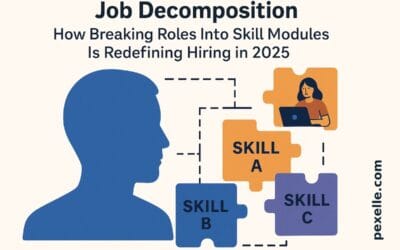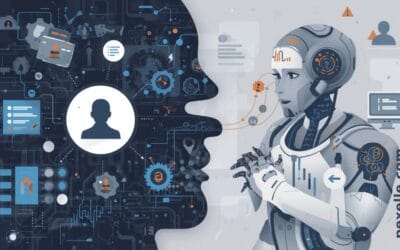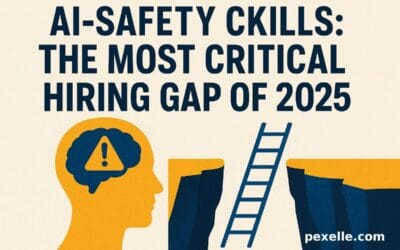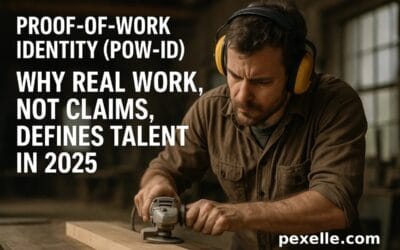AI-as-Manager: The Redefinition of Leadership in the Workplace (2025 and Beyond)

The modern workplace is undergoing a structural transformation: management is becoming computational.
It is no longer science fiction to say that tasks, priorities, performance evaluation metrics, workflow coordination, and resource distribution can be directed by AI systems instead of human managers.
This transition does not eliminate human leadership—it repositions it.
1. Why Traditional Management Is Being Automated
Management is fundamentally about:
- Prioritizing work
- Allocating resources
- Monitoring performance
- Coordinating teams
- Ensuring delivery and accountability
These processes rely heavily on:
- Data interpretation
- Pattern recognition
- Outcome prediction
- Standardized evaluation
These are precisely the tasks AI systems now outperform humans at:
- They process more information
- They do not get tired, biased, emotional, or political
- They can evaluate performance continuously, not quarterly
- They operate without ego or hierarchy signaling
Therefore, AI is becoming a management layer, not just a support tool.
2. What Changes When the Manager Is Not Human
When a manager is AI-driven, the workflow shifts from instruction → execution to signal → response.
| Traditional Manager | AI Manager |
|---|---|
| Gives verbal instructions | Issues structured task assignments |
| Checks progress manually | Monitors output in real time |
| Evaluates performance based on perception | Evaluates based on quantifiable output |
| Personal bias influences feedback | Feedback is standardized and data-backed |
This makes work environments:
- More transparent
- More optimized
- Less politically driven
- And significantly faster
But it also introduces new psychological pressures:
- You cannot “look busy” as performance masking.
- You cannot hide under team reputation.
- Productivity and clarity of contribution become fully visible.
3. Performance Evaluation Under AI Oversight
AI does not evaluate personality.
It evaluates:
- Output quality
- Time to completion
- Consistency
- Communication clarity
- Collaboration metrics
- Problem-resolution patterns
There is nowhere to hide behind:
- Charisma
- Networking
- Title prestige
- Historical performance
This system rewards those who produce real value, not those who look like they do.
4. The New Skills Required to Work Under AI-Based Management
Workers now need meta-operational skills, such as:
| Skill | Why It Matters Now |
|---|---|
| Precision Communication | AI systems require clear inputs to assign clear tasks |
| Task Decomposition | Work will be broken into micro-deliverables |
| Self-Management | Less external supervision means higher self-regulation |
| Evidence-Based Output | Work product must prove its own value |
| Human Collaboration | The hardest part left is coordinating humans around AI’s instructions |
In short:
Workers must learn to work like engineers, even if they are not engineers.
5. What Happens to Human Managers?
Human managers do not disappear—they change roles.
They become:
- Strategic interpreters → translating business goals into operational signals.
- Cultural stabilizers → supporting motivation, conflict resolution, and identity.
- Human complexity mediators → handling nuance that models cannot yet process.
In other words:
AI manages work, humans manage humans.
Leadership becomes more emotional, less operational.
6. Where Pexelle Fits In
As AI takes over managerial structures, skill clarity becomes essential.
AI systems require:
- Standardized micro-skills
- Task readiness maps
- Proven ability metrics
Pexelle provides:
- Micro-skill definition frameworks
- Task-based verification
- Performance evidence anchoring
- Skill identity that is machine-readable
This allows AI managers to assign tasks accurately and fairly—because they know exactly who can do what and to what level.
Pexelle is not just future-aligned;
it is the skill layer that makes AI-managed organizations workable.
Conclusion
AI will not replace managers.
AI will become management infrastructure.
That means:
- Work becomes more objective
- Value becomes quantifiable
- Performance becomes continuous
- Skills become transparent and verifiable
The future is not about working for AI.
It is about working with AI, under systems that reward real capability.
Those who adapt will outperform.
Those who resist will be replaced—not by AI, but by people who learned to work with it.
Source : Medium.com




